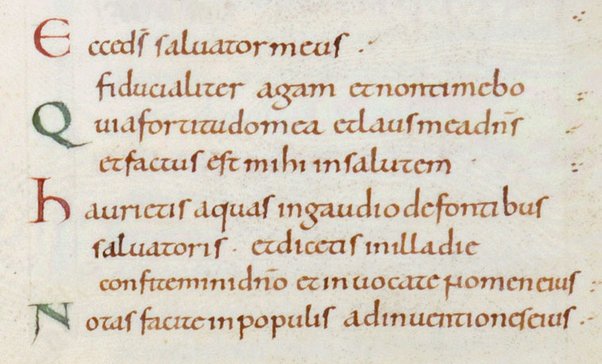People who ask this question don’t seem to know that word spacing is quite a recent invention, and very few ancient scripts had spacing. Some still do not, including alphabets like Arabic.
Spacing in the Latin Alphabet wasn’t invented until the Carolingian period (9th century AD). This is also when innovations like punctuation became formalized. In ancient Rome, neither concepts existed. This is why, if you actually visit Rome, you will notice that there is no word spacing on the carvings:

The reason is simple: real estate for writing was extremely expensive, so you want to fill as much of it as possible with text, not empty space.
—
It wasn’t until ancient Latin was rediscovered in the Carolingian period, some 400 years after the fall of the Western Roman Empire, that ideas like word spacing were invented and formalized.
Carolingian scribes in Frankia invented a script called “Carolingian Miniscule”:

It was the first time in Western history that the Latin Alphabet formalized three key concepts that we take for granted:
- Spacing
- Punctuation
- Lower case letters
Iterations of these three concepts can be found on earlier texts, but they weren’t standardized and weren’t considered the norm. The norm was still to not use any of these three, and just have a long string of capital letters.
There’s some debate among modern scholars as to what prompted these changes. One theory that I subscribe to is that the scribes who were producing these texts didn’t actually speak the form of archaic Latin that was being used, so they needed some textual aids to help them with reading comprehension.
Given that Chinese is a logographic language, there is no need to distinguish where one character ends and another begins. The size of each character on the page or scroll is also fixed, so you will never mistake one radical from a character to be part of another character.
Sure, most Chinese words consist of more than one character, so it may help to put space between these words. It would certainly make it easier for people learning Chinese.
Let me demonstrate:
我国要赶紧解放台湾。— This might be hard to read even for some native Chinese speakers.
我国 要 赶紧 解放 台湾。— Now this is much easier to read, even for Chinese learners.
But here’s the thing. Chinese does actually do this already, but only when we use Pinyin, which is our “Chinese for new learners” tool.
If I were to write the above sentence in Pinyin, it would look like:
woguo yao ganjin jiefang taiwan
—
So, would Chinese be easier for everyone to read if it did utilize spaces the way that the Latin Alphabet does? Yes, undoubtedly so.
But because Chinese scholars never struggled with reading comprehension like Frankish scholars did with classical Latin, there was never the impetus to make the language easier to read by non-native speakers.